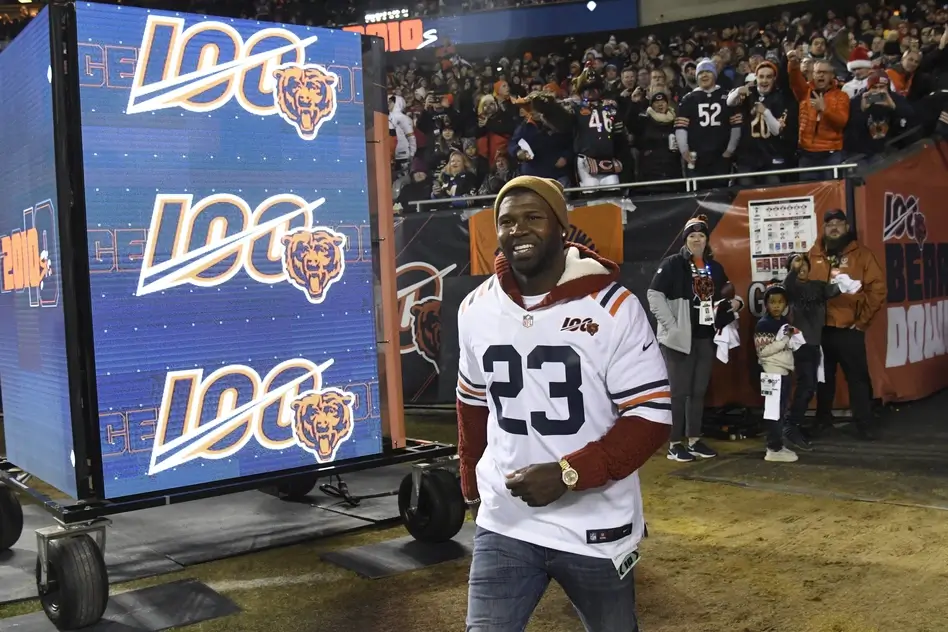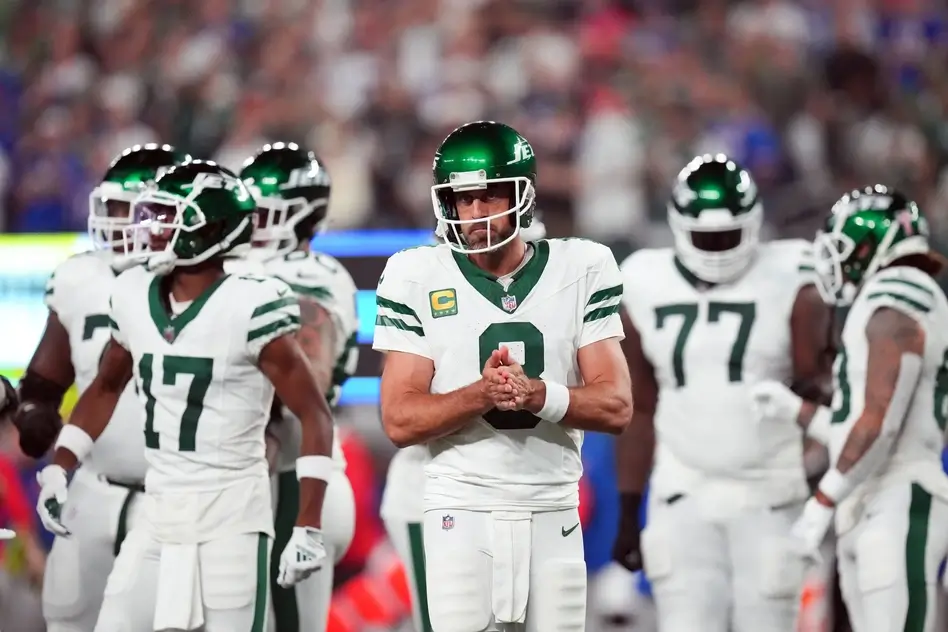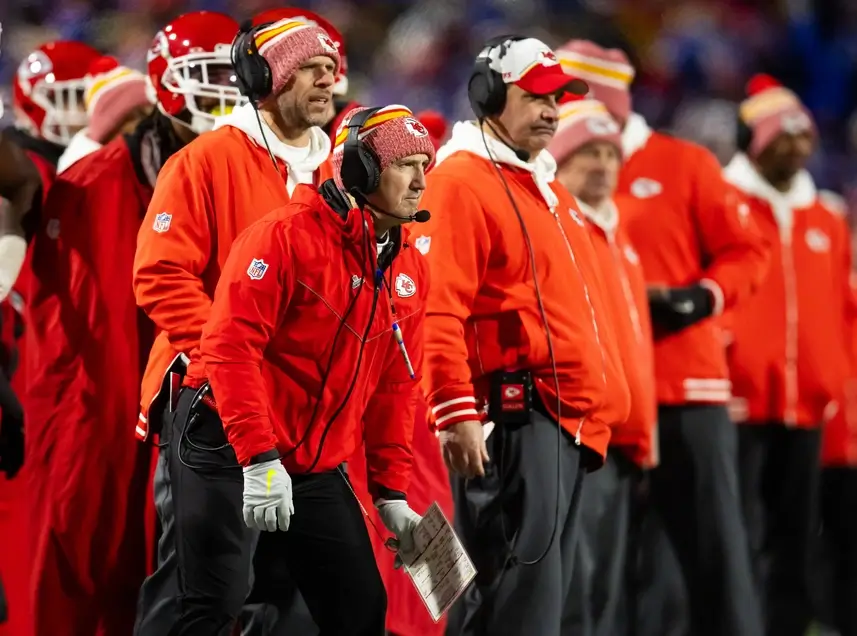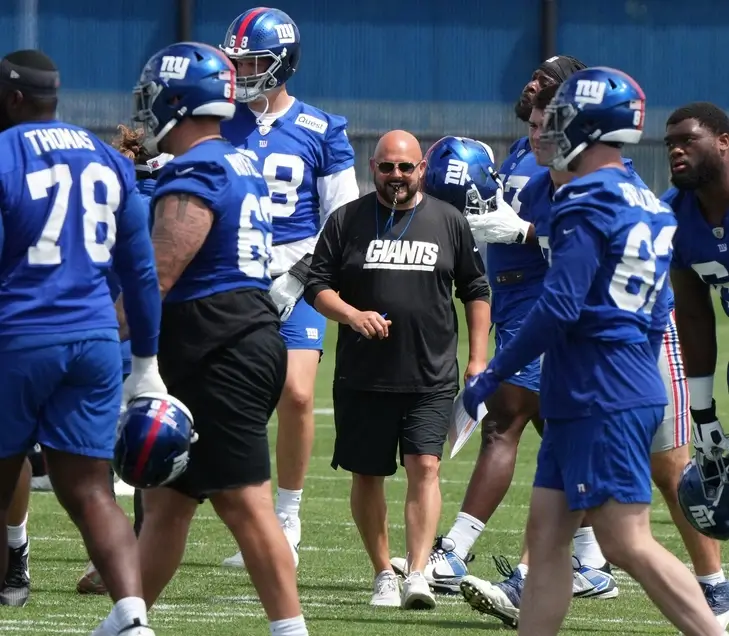Chase Young was supposed to be the first building block of a new era for the Washington Football Team. Ron Rivera took one look at Young wrecking offenses for Ohio State and saw Julius Peppers mark II.
Young was considered a can’t-miss prospect and more than worthy of the No. 2 overall pick in the 2020 NFL draft. Well, it’s just eight games into Young’s pro career, but things are already not going to plan.
The rookie has just 3.5 sacks to his credit and reached a low point during Sunday’s 30-27 loss to the Detroit Lions. Young’s needless and idiotic shove of Lions’ quarterback Matthew Stafford gave Detroit the chance to position Matt Prater to kick a 59-yd field goal as time expired.
It doesn’t matter how hard Young hit Stafford. What matters is any contact was unnecessary and always likely to be punished, if only for intent.
There was also something a little flippant about Young’s brief explanation of his logic-defying actions:
Many will be inclined to excuse a first-year player having a rush of blood to the head. Especially a rookie for whom there are such great expectations.
Those expectations are often summed up by the phrase “gold jacket prospect.” The implication is Young has talent worthy of the Hall of Fame. His place in Canton is already ordained.
Rivera should worry because these projections already look like the stuff dreams are made of. Young hasn’t made the impact expected in Rivera and coordinator Jack Del Rio‘s 4-3 scheme.
Their decision to ditch the 3-4 front Washington had been tethered to for a decade was a wise move. Yet its success hinged on the front four being dominant.
It looked like a safe bet considering the number of former first-rounders along Washington’s D-line. Tackles Jonathan Allen and Daron Payne once formed an interior wall for Nick Saban at Alabama.
Ryan Kerrigan was the 16th player taken in 2011. He’s the franchise sack leader. Montez Sweat was one of Washington’s two first-round picks, along with Dwayne Haskins, a year ago.
Young was supposed to be the icing on the cake, the true game-wrecker who made everybody around him better. Things looked good initially when Washington sacked Carson Wentz eight times (Young had 1.5 of those sacks) during a 27-17 victory over the Philadelphia Eagles in Week 1.
Yet who hasn’t sacked Wentz this season? I’m even thinking of taking a few snaps myself the next time the Philly offense is on the field.
It’s Young’s performances since Week 1 that are cause for concern. He didn’t have a sack against the Lions, nor a tackle for loss, despite playing the majority of Washington’s defensive snaps.
Young has just two sacks since the opening day. Hardly the kind of production that’s going to get him enshrined at Canton someday.
Young has been drawing a crowd most of the season, especially in recent weeks:
Earning the attention of two and three blockers is a sign of respect from opposing teams. It’s also something guaranteed to create opportunities for others.
Sweat has been a direct beneficiary of protection being shifted toward Young. He’s leading the team with five sacks.
Young doesn’t have the sacks, but he’s still making life uncomfortable for quarterbacks.
There’s still something troublesome about a player applying pressure, but not completing plays with sacks and turnovers. Making game-changing plays is what defined the careers of pass-rushers who got to put on a gold jacket.
Let’s just for a moment speculate by comparing Young to some of the names he’s expected to follow. Lawrence Taylor was taking down quarterbacks and knocking the ball loose from day one with the New York Giants.
Taylor was the AP Defensive Player of the Year as a rookie in 1981. Reggie White played his first NFL season in 1985. He had 4.5 sacks after eight games and finished with 13 for the year.
Let’s move the conversation closer to the present day. Aaron Donald had nine sacks as a rookie in 2014.
Of course, there are examples in Young’s favour. J.J. Watt only posted 5.5 sacks for the Houston Texans in 2011, before exploding with 69 over the next four seasons.
It’s also true a defensive end’s impact goes beyond sacks. The problem is Young has only one forced fumble to his credit and hasn’t batted down a single pass.
QB takedowns are still the bread and butter for a pass-rusher, and Young doesn’t have enough of those.
It’s not just his pedestrian numbers that should worry Washington. Rivera, who has more control than most coaches have been granted by Daniel Snyder, should also be second-guessing the decision to draft Young in the first place.
An edge-rusher was hardly a need for a team loaded with options. Even if Rivera wanted one more, a trade for Yannick Ngakoue would have given Washington more flexibility on draft day. So would signing a free agent like Everson Griffen.
Rivera would’ve been able to trade out of the No. 2 slot and still be in place to draft one of the many left tackles selected in the first round. Left tackle has been a major weakness since disgruntled Trent Williams went on strike and was ultimately dealt away to the San Francisco 49ers.
Morgan Moses started at LT against the Lions. He has some experience there from his college days at Virginia, but Moses has been a right tackle since joining the pros in 2014.
It’s a similar story with Brandon Scherff. He was a dominant left tackle at Iowa, but Scherff has been a Pro-Bowl right guard with Washington.
Rivera could’ve drafted Andrew Thomas, Jedrick Wills, Mekhi Becton, or Tristan Wirfs to replace Williams. Washington would have been able to use any picks acquired in trade to bolster other thin positions, such as wide receiver and tight end.
Naturally, there’s an element of hindsight to this. Yet the question of whether selecting Young made the most sense for a franchise permanently stuck in rebuild mode is one worth asking.
Especially when Young is struggling to deliver what was advertised.









He’s not putting up the stats I’d like to see, but if you watch him, he’s contributing a lot more than the author realizes.
Sacks are so one dimensional, young is making explosive plays that are at an elite level and taking on 2+ blockers to allow WFT the best defense it has had in decades
Pingback: NFL Rookie of the Year: Ranking the best 2020 rookies